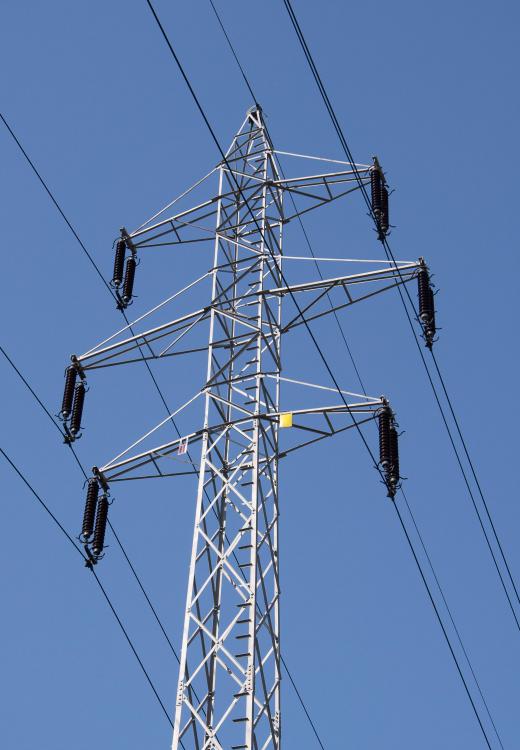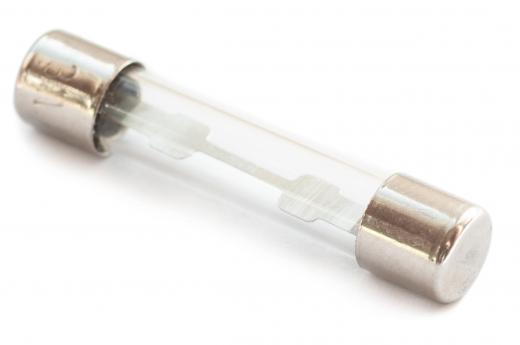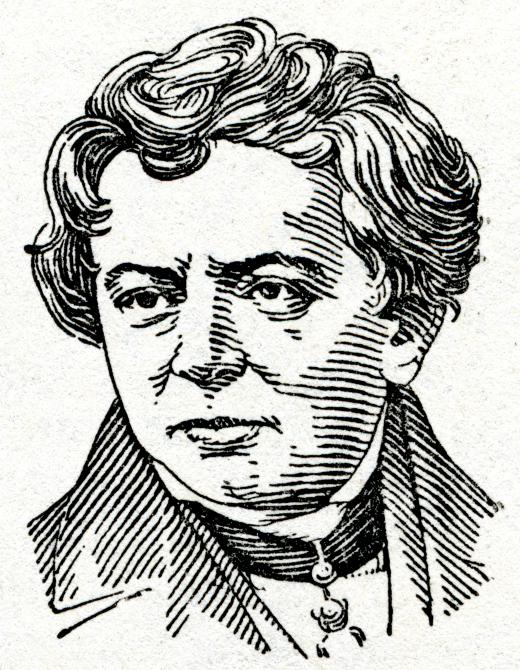In Physics, what is Resistance?
 Nicole Madison
Nicole Madison
In physics, resistance is a measure of the tendency of a material to resist the flow of an electrical current. It is dependent on the nature of the material, its thickness and length, and on temperature. Resistance is low in substances, such as metals, that are good conductors, and high in materials, such as plastic and rubber, that are insulators. When an electrical current encounters resistance, part of its energy is converted into heat, and sometimes light, reducing the current. This phenomenon can be a problem, but also has many uses.
Factors Affecting Resistance

Resistance can be regarded as the inverse of conductivity, and the most important factor in conductivity is the composition of the material. An electrical current consists of a flow of electrons, and resistance is encountered when these bump into atoms. Metals have many loosely held electrons that allow a current to flow easily, whereas non-metals do not. Liquids that contain ions — for example a salt solution, or molten salt — are also good conductors, as these mobile, electrically charged atoms and molecules allow a current to flow.

In a wire or cable, the thickness and length also play a role. Resistance increases with length, as there are more atoms to bump into, but decreases with thickness, as in a thicker wire there are more electrons available to carry the current. It also increases with increasing temperature. The lower the conductivity of a material, the higher the voltage, or electromotive force, required to make a current flow through it.
Ohm’s Law

The relationship between resistance, current and voltage is known as Ohm’s law, named after the German physicist Georg Ohm (1789-1854), who is credited with discovering the effect of a material's make up, length and thickness on the amount of current that will flow through it at a given voltage. The unit ohm is also named after him. The law, in its usual form, states that electrical current is equal to voltage divided by resistance. Physics equations typically use letters and symbols to express relationships; Ohm’s law is normally written as
where I = current in amperes, V = electromotive force in volts and R = resistance in
. This means that if the values for two of these factors are known, the value of the other can be found. The equation can be written as
and
depending on which values are known, and which one is to be calculated. For example, if the electromotive force is six volts and the current flowing is two amps, the resistance is 3 ohms: R = V/I.
Uses

The fact that electrical resistance generates heat is exploited to provide electric heating for homes and for cooking. Electric hobs, ovens, grills and toasters all depend on this phenomenon. In the same way, the filament light bulb uses a very thin wire to generate light when a current flows through it.
Devices called resistors are used to reduce the amps within certain circuits to protect delicate components from damage, and fuses are used to protect electrical equipment from surges of current. These consist of a wire whose composition, thickness and length are adjusted to produce a level of resistance that causes them to melt from the heat generated when the current goes above a certain value. This breaks the circuit and prevents the current from causing damage. They are commonly used in plugs and come in various types, such as 3-amp, 5-amp and 13-amp.
Lie detectors rely on the fact that the conductivity of human skin is greatly increased by sweat, which contains ionic compounds, such as salt. The subject is wired up to a device that passes a small current across the skin and measures its value. The idea is that lying increases the amount of sweating, which increases the skin’s conductivity, and results in a larger current flowing.
Power Transmission
In order for electricity to be transmitted from generating stations into homes, it is necessary for it to travel long distances through power lines. This would make it impractical at the voltages at which the electricity is initially produced, as too much energy would be lost through the resistance of the cables. For this reason, transformers are used to greatly increase the voltage for transmission, minimizing loss of energy. The voltage is reduced again by transformers close to the homes to be supplied.
AS FEATURED ON:
AS FEATURED ON:














Discussion Comments
Np = 100
Ns = 1000
Ep = 120 Vac
Es = ?
Rs = 1000 ohms
(Ep/Es) = (Np/Ns)
Es = Ep/(Np/Ns)
Es = 120/(100/1000)
Es = 1200 Vac
Also a = Np/Ns = 0.1
Let others do the other questions cheers from the philippines!
voltage = current x resistance
Question: Consider a simple transformer that has a 100-turn primary coil and a 1000-turn secondary coil. The primary is connected to a 120-V AC source and the secondary is connected to an electrical device with a resistance of
1000 ohms.
1. What will be the voltage output of the secondary?
2. What current flows in the secondary circuit?
3. What is the power in the secondary coil?
4. Neglecting small heating losses, and knowing that energy is conserved, what is the power in the primary coil?
5. What is the current drawn by the primary coil?
If somebody could help me with these, it would be greatly appreciated!!
Thanks!
Post your comments